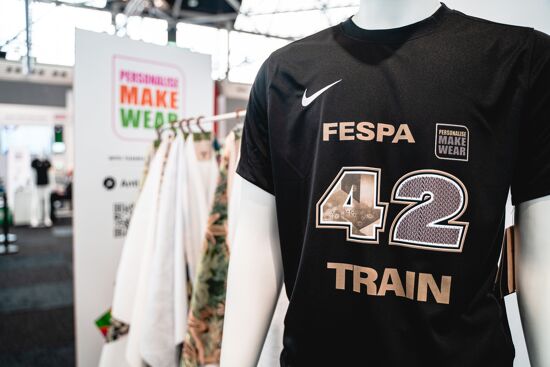Durst targets textile print growth with business restructure

Digital printing and production technologies manufacturer Durst has opted to restructure its industrial textile printing segment as part of a move to win new business in the market.
Dr. Stefan Kappaun will now assume responsibility for the strategic direction in home textiles, clothing and accessories, as well as serve as the connecting link to the large-format segment, which will take over soft signage and fabrics in the portfolio.
Technical chemist Dr. Kappaun is a member of Durst Group’s executive team and heads the ink business for all segments as executive vice president inks and fluids.
Speaking to FESPA.com about his new responsibilities and the decision by Durst to restructure the segment, Dr. Kappaun said that industrial textile printing is one of the strongest growth areas in digital print and the manufacturer is keen to take advantage of this trend.
“Durst has already entered this market successfully and wants to further drive the digitalisation of textile printing businesses with its Alpha Series platform,” Dr. Kappaun said. “The current re-structuring of the Durst textile printing business is devoted to driving this growth by bringing the holistic pixel-to-output approach of Durst to our customers.
“Based on the highly productive Alpha printer platform, digital production capabilities are brought to our customers that are suitable for growing and improving their businesses and business models, respectively.
“Digital textile production will out-perform classical printing techniques in a short period of time, and Durst wants to support its customers in this change. With a segment approach based on clarity, competence and results, Durst wants to drive and capture the growth momentum of digital textile printing.”
In taking on his new role, Dr. Kappaun succeeds Martin Winkler, who will now move to the position of global sales manager textile printing. Dr. Kappaun will have support from experienced service technician Martin Oberparleitner as the new junior product manager textile printing.
Focusing on his own goals for the segment, Dr. Kappaun said he is committed to bringing the Durst pixel-to output approach to the textile industry. He is also focusing on helping Durst customers to drive the further digitalisation of their print businesses, as well as capturing the momentum of growth.
“Digital textile printing is an integral part of the Durst Strategy 2025,” he said. “With the Alpha platform and the Durst pixel-to-output approach, digital technology is offered to our customers that is suitable for driving and growing their businesses.
“We look forward to the opportunities ahead and supporting our customers in taking the next step in digital industrial textile printing.”
Topics
Interested in joining our community?
Enquire today about joining your local FESPA Association or FESPA Direct
Recent news

Streamlining personalisation with tech: Insights from the SmartHub Conference 2025 speakers
Personalisation Experience 2025 (6 – 9 May 2025, Messe Berlin, Germany) is running its inaugural SmartHub Conference from 6 – 8 May 2025.

Special Effects in DTF: How Neon Inks Are Making Apparel Pop
Neon fluorescent inks are the latest innovation in DTF printing, offering vibrant, eye-catching effects under both daylight and UV light, giving apparel decorators a competitive edge. Testing shows good wash durability, though market perception of added value is still developing. With increasing adoption and ongoing technological advancements, neon represents a significant upgrade for creative customisation.

Unlocking Growth Opportunities in the Printed Personalised Apparel Industry
The printed personalised apparel industry is booming, projected to reach $10.1 billion by 2030. Driven by consumer desire for self-expression and branding needs, technological advancements like DTG/DTF and e-commerce integration are key. Sustainability, eco-friendly materials, and on-demand printing are crucial growth drivers. Businesses leveraging these trends, including AI and social media, have significant commercial potential.

Personalisation: From mass production to print-on-demand
Technological advancements are driving the growing trend of personalisation, fueled by consumer demand for unique products. From packaging campaigns like Share-a-Coke to customised apparel by Nike and Adidas, and AI-powered tools, the shift from mass production to print-on-demand is evident. The SmartHub Conference at the Personalisation Experience from 6 - 8 May will explore these opportunities and challenges for businesses.